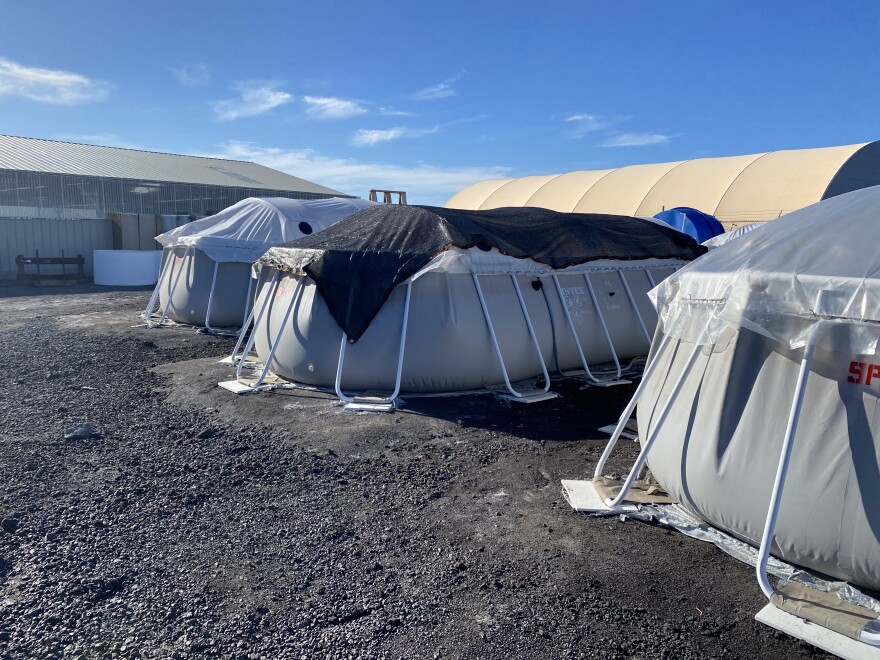Aquaculture generated close to $80 million in 2021, more than coffee or macadamia nuts — the cash crops often associated with the islands.
Coming off the Year of the Limu, the commercialization of Hawaiʻi seaweed looks promising — not so much for human consumption but for cattle to cut the methane that they release.
Blue Ocean Barns sustainably harvests and propagates limu kohu in huge tanks at the Natural Energy Laboratory on Hawaiʻi Island. It just announced an infusion of $20 million.
"It's an affirmation that what we're doing will have a market, will have a need, and will be really a way for Hawaiʻi to be participating in the new economy, the new low-emission economy," said Blue Ocean Barns CEO Joan Salwen.

On the Big Island, workers harvest and dry limu in large batches. Then it gets milled and fed to cattle as a powder mixed in with the feed.
"When it is fed to cattle as part of their diet, a very small part of their diet, it almost completely shuts down their emission of methane gas, which is an enormously potent contributor to climate change," Salwen said. "Prior to really finding this Hawaiʻi-based limu as kind of a Gas-X for cows, a Beano for cows, there really wasn't any good solution at all for shutting down methane gas production in cattle — which is just a natural process of their digestion.”
Salwen said her company's clients include a number of food companies, as well as California's Clover Sonoma Dairy, and the makers of Ben and Jerry's Ice Cream.
———
More from Aquaculture Week on The Conversation:
This interview aired on The Conversation on Jan. 10, 2023. The Conversation airs weekdays at 11 a.m. on HPR-1.









